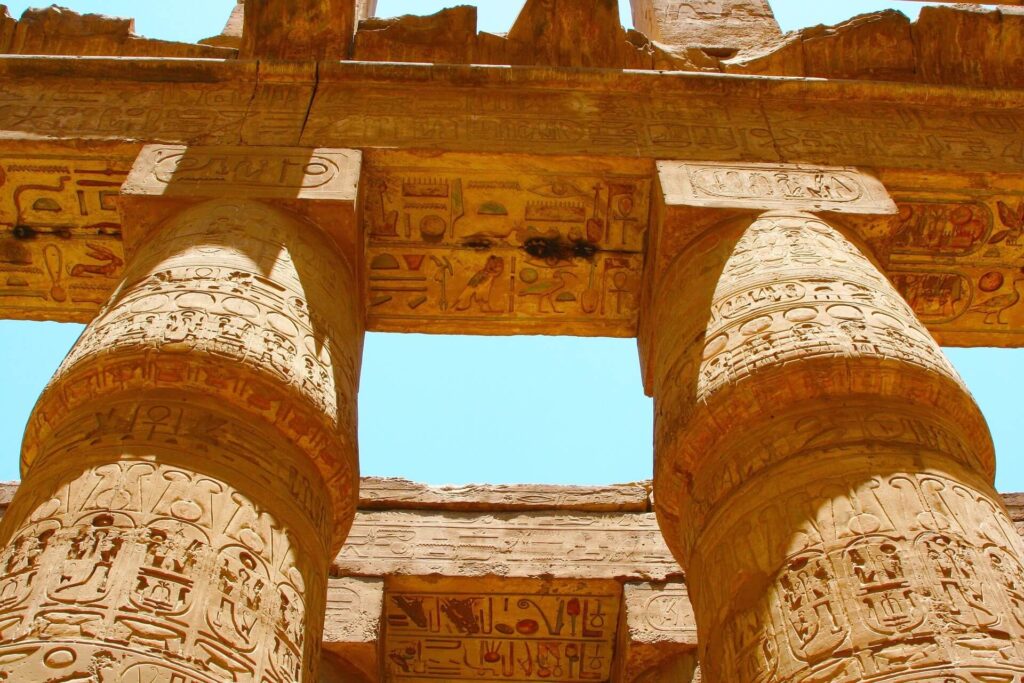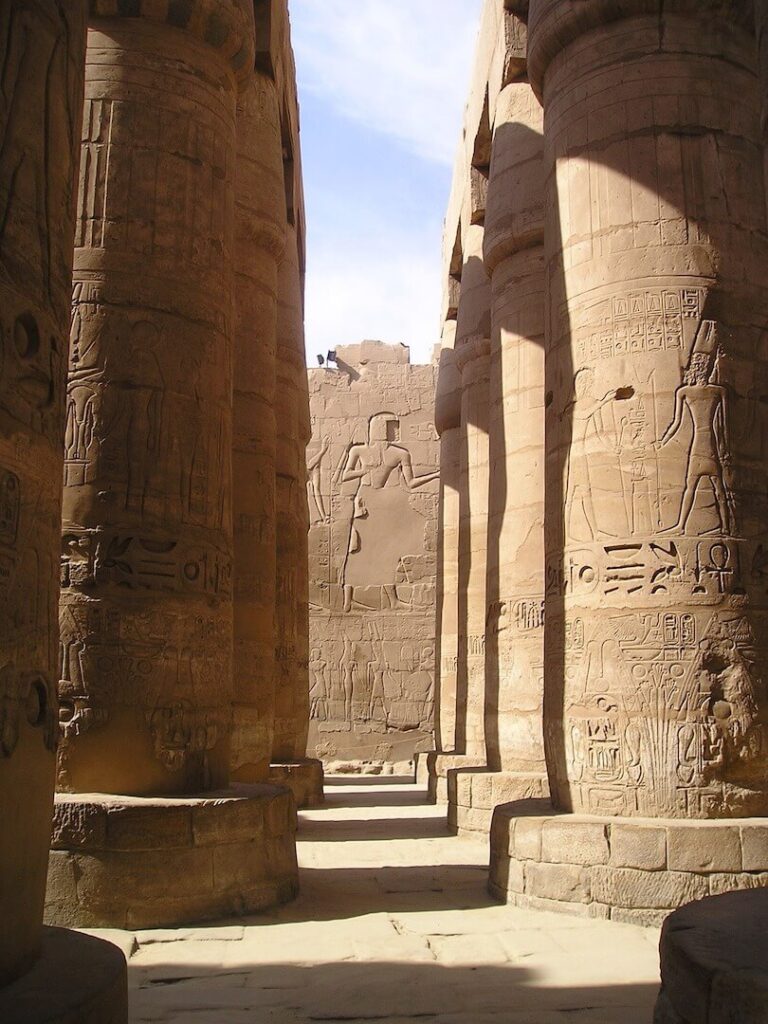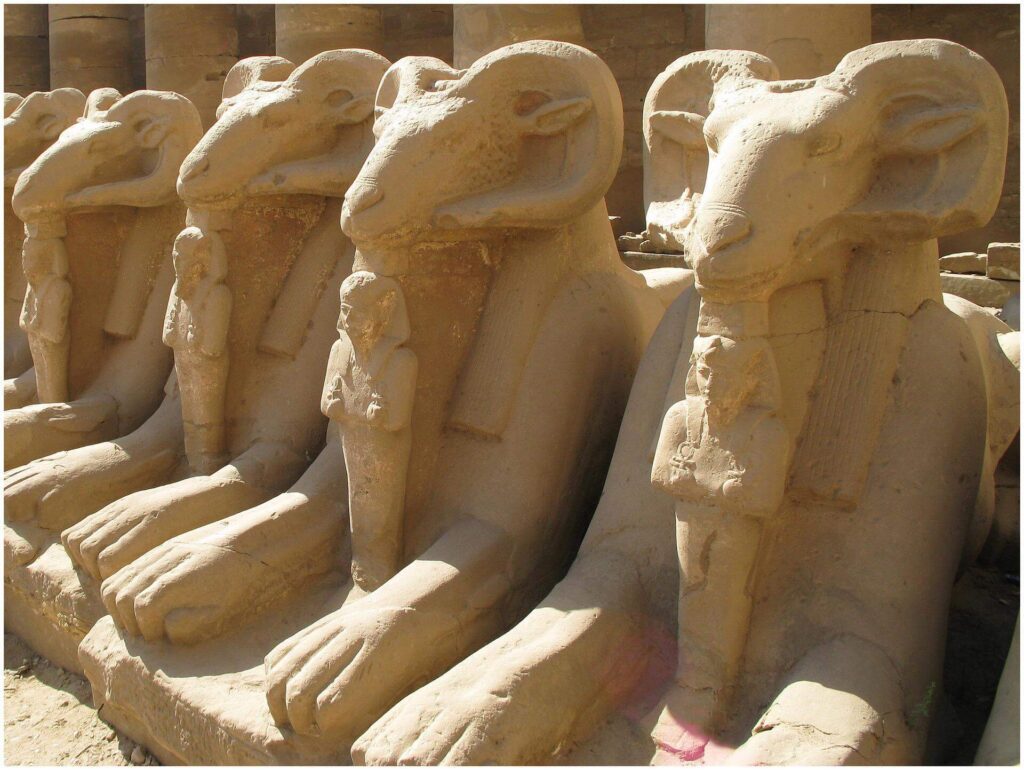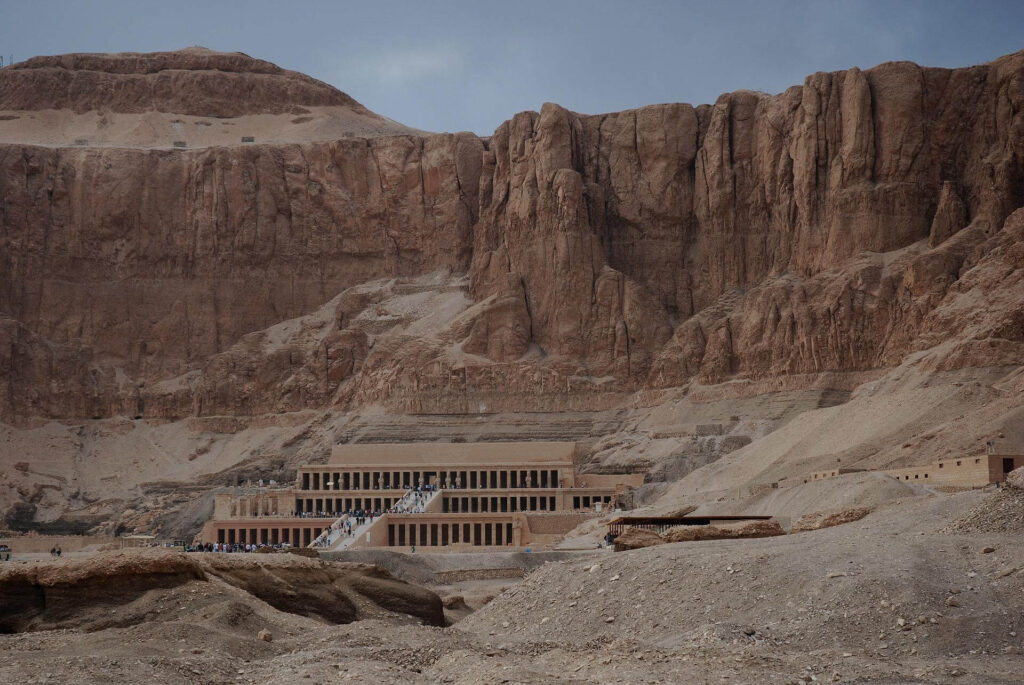The city of Luxor sits on the east bank of the River Nile, 504 kilometres (313 miles) south of Cairo, as the crow flies. Within its boundaries is the site of the ancient city of Thebes. It’s hardly surprising, then, that Luxor holds a reputation as the world’s greatest open-air museum.
In fact, there’s so much to see and do in Luxor that it can soon become overwhelming, especially if you’re taking the DIY approach.
At Mr & Mrs Egypt, we have more than 30 years of tourism industry experience. Our team has unmatched knowledge of, and a genuine passion for, Egypt’s history, culture, and beauty.
We create one-of-a-kind, multi-day tours of Egypt that deliver everything you want and expect. Our options include pre-designed as well as custom Egypt holidays tailored to you.
Are you ready to take the first step toward a once-in-a-lifetime holiday in Egypt? Contact us today and turn your dream into a reality.
For now, we focus on Luxor and all the incredible sights you can explore there. If you’re looking for a complete guide to make your visit unforgettable, read on below.

Marvel at Luxor’s Amazing Ancient History
Luxor sits on the east bank of the Nile, so we’ll start our guide there. On this side of the river, you will find:
- Karnak Temple
- Luxor Temple
- Luxor Museum
- Mummification Museum
Karnak Temple
Construction of this temple took place during the reign of 30 pharaohs. The process lasted for a staggering 2,000 years, so, understandably, the site is huge! When it comes to the world’s religious complexes, only Angkor Wat in Cambodia is larger.
We already have a detailed introduction to Egypt’s Karnak Temple complex, so we’ll only look at some highlights here.
Inside the Great Hypostyle Hall is the jaw-dropping sight of 134 giant sandstone columns.
In the central nave, 12 of these columns, lined up in a double row, exceed 20 metres (70ft) in height. The remaining 122, set back from the central aisle, are slightly smaller, but still massive in scale.
A short walk outside this hall is the Avenue of the Sphinxes (or Avenue of the Rams), a double row of ram-headed sphinx statues facing one another on either side.
Stretching for 2.7km and once named ‘The Path of God’, this avenue extends south and connects the Karnak complex to the Luxor Temple.
The 3,000-year-old avenue was buried for centuries until Egyptian archaeologist Zakaria Ghoniem discovered 8 sphinx statues in 1949.
After over 7 decades of excavation and restoration efforts, the Avenue of the Sphinxes was recently reopened in November 2021 in an extravagant, historic ceremony that was covered by major news networks all over the world.
The Karnak Temple Complex is a key feature in all our Luxor tours. With Mr & Mrs Egypt, you can be sure that you won’t miss a thing!


Luxor Temple
Smaller and more centrally located than Karnak, Luxor Temple dates back to 1400 BCE. The ancient Egyptians constructed it as a place to coronate royalty.
Today, the site is split into numerous sections, all of which have their individual highlights, including:
- The Obelisk of Ramses II
- The giant pillars of the Grand Colonnade
- The Sun Court of Amenhotep III
- The towering statues of Ramses II
- The temple’s own part of the Avenue of the Rams
Because of its more central location, you can take in the splendour of Luxor Temple at sunset, when the ambience turns truly magical.
Luxor Museum
A city overflowing with history needs a home for all the precious artefacts discovered over the years – not to mention those that Egyptologists still find to this day.
Within the walls of the Luxor Museum, you’ll find exhibitions showcasing the treasures found in the area’s tombs and temples.
Signs are written in Arabic and English, so you’ll get the perfect introduction to colossal statues, pharaonic art, intricate jewellery, and more.
With so many items to display, there’s an annexe dedicated solely to New Kingdom treasures, including two royal mummies, one of which is believed to be Ramses I.
Mummification Museum
If a trip to Luxor Museum piques your interest in mummies, head over to the Mummification Museum. As you’ve probably already guessed, this museum offers exhibits that detail the art of mummification.
On display here is the well-preserved mummy of Maserharti, a high priest of Amun in the 21st dynasty, as well as an array of mummified animals.
In the various vitrines are the materials and tools used during the mummification process. This includes a metal spatula and small spoon used for, well, scraping brains out of skulls.
You may not want to schedule any meals until after your visit!


Luxor’s Incredible History Continues on the West Bank of the River Nile
The history, intrigue, and fascination continue across the river from Luxor. On the west bank, you’ll find the Valley of the Kings, the Valley of the Queens, and the Mortuary Temple of Hatshepsut.
The Valley of the Kings
An undoubted highlight of any Luxor itinerary, the Valley of the Kings is the resting place of the greatest, most powerful pharaohs that ruled in the New Kingdom.
As any history buff already knows, it’s here that an expedition led by British archaeologist Howard Carter discovered the tomb of Tutankhamun in 1922.
There are 63 tombs in total, each cut into the rock and adorned with carvings celebrating the life of the person laid to rest there, as well as ancient Egyptian mythology.
Your entry ticket only allows access to 3 tombs, so you must choose carefully. Thankfully, not all the tombs are available at once. The authorities open them up on a rotational basis to minimise damage.
If you still feel the pressure of too much choice, the team at Mr & Mrs Egypt is always on hand to offer our own recommendations.
The tombs of Ramses VI and Tutankhamun require their own separate tickets, but they are certainly worth it.
The Valley of the Queens
Located to the southwest of the Valley of the Kings, the Valley of the Queens is the burial site for queens, princesses, and female pharaohs. During ancient times, it went by the name Ta-Set-Neferu, which translates to ‘the place of beauty’.
The biggest attraction for many tourists in Luxor is tomb QV66, the resting place of Queen Nefertari, wife of Ramses II.
Temple of Hatshepsut
Considered a masterpiece of ancient architecture, Queen Hatshepsut oversaw the construction of her eponymous temple in the 15th Century BC.
The structure consists of 3 huge terraces rising above the desert floor, reaching back into the cliffs behind.
As a female ruler, Hatshepsut’s legacy was erased for much of history. In fact, many later kings claimed her temple, and other works, as their own. It’s only in the last century or so that Hatshepsut’s position in history has received the attention it deserves.


Book One of Our Tours in Luxor for the Authentic Ancient Egyptian Experience
Now that you’ve got a taste of what Luxor has to offer, ensure you see and learn as much as you want by leaving everything with us.
We cover Egypt’s rich past like no other tour guides.
If some of your favourite books are set in Egypt, visit our sister company Literary Tours in Egypt. Browse a range of tours inspired by the works of Agatha Christie, Noel Barber, and Rosie Thomas.
Luxor is a cornerstone of ancient Egyptian history and our tours. But our expertise extends across the country, from Cairo to Alexandria to Aswan.
Are you ready for an adventure through Egypt? Get in touch with us today and let’s start shaping a trip of a lifetime.